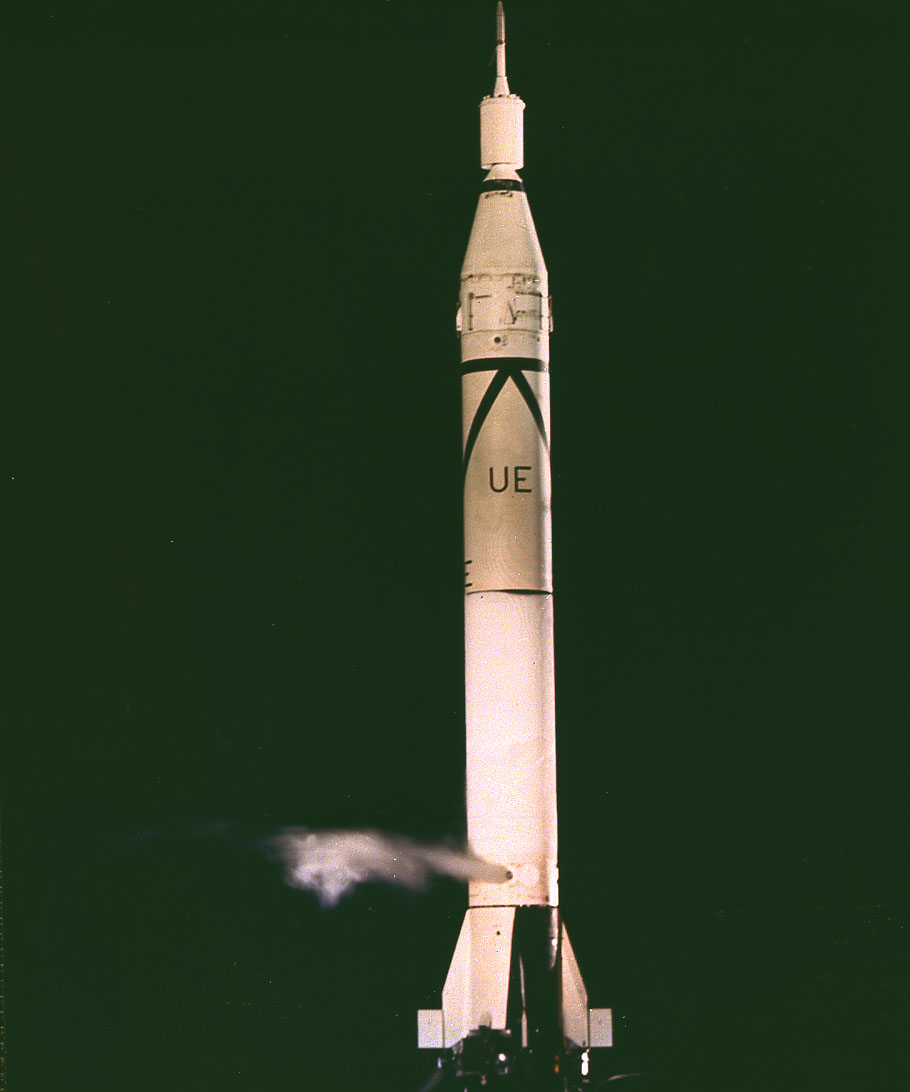
Juno-I
In-activeChrysler (CHR)
Jan. 31, 1958
Description
The Juno I was a four-stage American booster rocket which launched America's first satellite, Explorer 1 in 1958. A member of thr redstone family, it was derived from the Jupiter-C sounding rocket.
Specifications
-
Stages
4 -
Length
21.2 m -
Diameter
1.78 m -
Fairing Diameter
1.78 m -
Launch Mass
29.0 T -
Thrust
416.0 kN
Family
-
Name
Juno-I -
Family
― -
Variant
Juno I -
Alias
― -
Full Name
Juno-I
Payload Capacity
-
Launch Cost
― -
Low Earth Orbit
11.0 kg -
Geostationary Transfer
Orbit
― -
Direct Geostationary
― -
Sun-Synchronous Capacity
―
Chrysler
Commercial
None
CHR 1950In July 1959, NASA chose the Redstone missile as the basis for the Mercury-Redstone Launch Vehicle to be used for suborbital test flights of the Project Mercury spacecraft. Three unmanned MRLV launch attempts were made between November 1960 and March 1961, two of which were successful. The MRLV successfully launched the chimpanzee Ham, and astronauts Alan Shepard and Gus Grissom on three suborbital flights in January, May and July 1961, respectively.
Juno-I | Beacon
Chrysler | United States of AmericaCape Canaveral SFS, FL, USA
Oct. 23, 1958, 3:21 a.m.
Juno-I | Explorer 5
Chrysler | United States of AmericaCape Canaveral SFS, FL, USA
Aug. 24, 1958, 6:17 a.m.
Juno-I | Explorer 4
Chrysler | United States of AmericaCape Canaveral SFS, FL, USA
July 26, 1958, 3 p.m.
Juno-I | Explorer 3
Chrysler | United States of AmericaCape Canaveral SFS, FL, USA
March 26, 1958, 5:38 p.m.
Juno-I | Explorer 2
Chrysler | United States of AmericaCape Canaveral SFS, FL, USA
March 5, 1958, 6:27 p.m.
Electron
Don't Be Such A Square (STP-S30)
Rocket Lab Launch Complex 2 (Launch Area 0 C) - Wallops Flight Facility, Virginia, USASTP-S30 is a complex mission that will deliver research experiments and technology demonstrations to orbit for the DoD and contribute to future space…
Falcon 9
Starlink Group 15-13
Space Launch Complex 4E - Vandenberg SFB, CA, USAA batch of 27 satellites for the Starlink mega-constellation - SpaceX's project for space-based Internet communication system.
Falcon 9
Starlink Group 6-99
Launch Complex 39A - Kennedy Space Center, FL, USAA batch of 29 satellites for the Starlink mega-constellation - SpaceX's project for space-based Internet communication system.
Ariane 62
Galileo L14 (FOC FM33 & FM34)
Ariane Launch Area 4 - Guiana Space Centre, French GuianaPayload consists of two satellites for Europe's Galileo navigation system.
Atlas V 551
Amazon Leo (LA-04)
Space Launch Complex 41 - Cape Canaveral SFS, FL, USAAmazon Leo, formerly known as Project Kuiper, is a mega constellation of satellites in Low Earth Orbit that will offer broadband internet access, thi…

